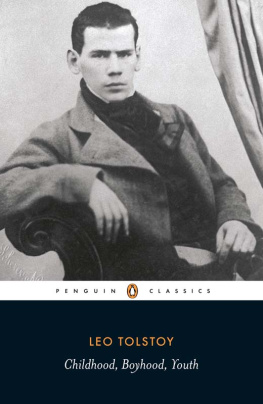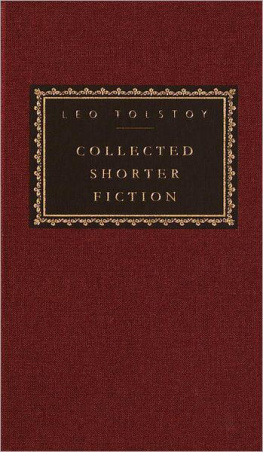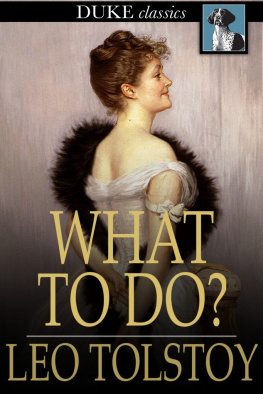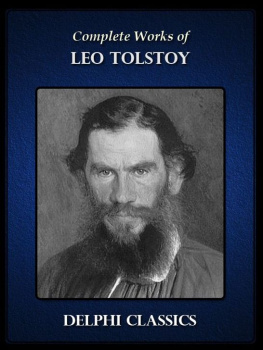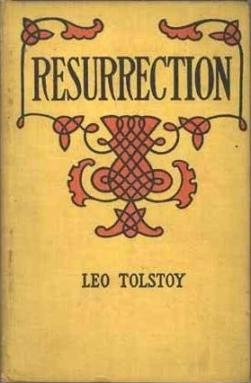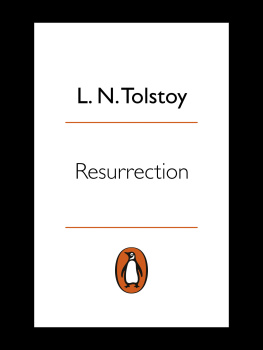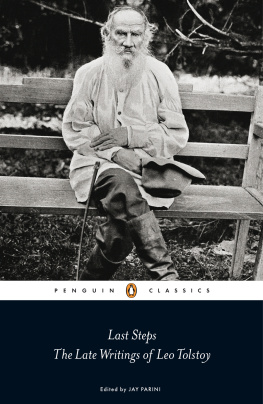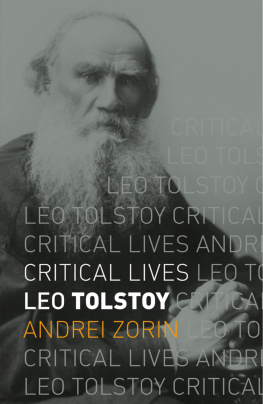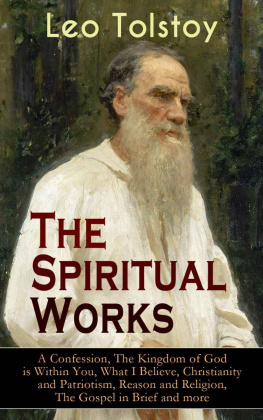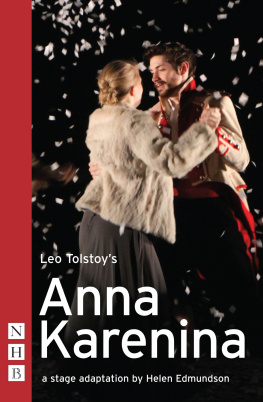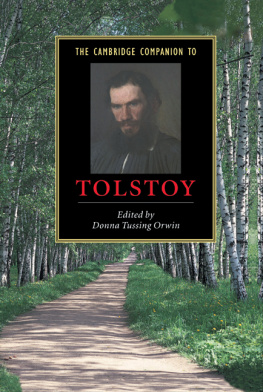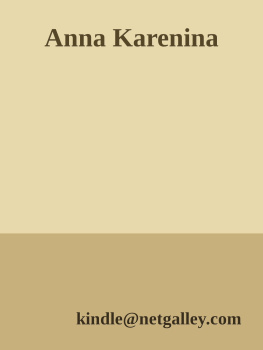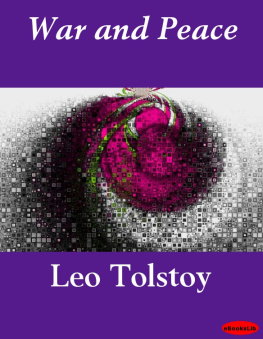LEO TOLSTOY
Childhood, Boyhood, Youth
Translated and with an Introduction and Notes by JUDSON ROSENGRANT

PENGUIN BOOKS
Chronology
1828 9 September (28 August, Old Style). Birth of Count Leo (Lev) Tolstoy, the fourth son of Count Nikolay Tolstoy and Princess Marya Volkonskaya, at Yasnaya Polyana (Clear Glade), their estate 125 miles south of Moscow near the city of Tula.
1830 Death of mother a few months after the birth of her daughter, Marya.
1837 Death of father not long after the five children move from Yasnaya Polyana to continue their education in Moscow in the home of their paternal grandmother.
1838 Death of grandmother. The two oldest children, Nikolay and Sergey, move to the home of their fathers older sister, Alexandra Osten-Sacken, to continue their Moscow studies, while Dmitry, Leo and Marya return to Yasnaya Polyana and the care of Leos beloved Auntie Tatyana Yergolskaya, their fathers second cousin and the person who Leo would later say had the greatest and most beneficial influence on him.
1841 Death of Aunt Alexandra. All five children move to the Volga city of Kazan and the home of their fathers younger sister, Pelageya Yushkova.
1844 Already a fine linguist with an excellent knowledge of French and German and a good command of English, thanks to his home education and gifts, he enters the University of Kazan in the Department of Arabo-Turkic Languages, the countrys best, to study Turkish and Tatar in preparation for a diplomatic career. The year, however, is squandered in drinking, gambling and regular visits to brothels.
1845 After failing his year-end examinations in the Department of Arabo-Turkic Languages, he enrols in the Department of Jurisprudence, where he works with the brilliant young professor of civil law Dmitry Meier. Meier encourages him to make a close study of Montesquieu (De lesprit des lois) in relation to the Instruction (Nakaz) of Catherine II.
1847 Inherits Yasnaya Polyana in the final distribution of his fathers property. Recovering from gonorrhoea, leaves the university for Yasnaya Polyana on the grounds of ill-health and domestic circumstances to pursue his own programme of enlightened estate management, self-improvement and reading, including the complete works of Rousseau.
1848 Leaves Yasnaya Polyana for Moscow, where he engages in dissipation and gambling, incurring large debts.
1849 Goes to St Petersburg, where he decides to take the examinations at the university in the Department of Jurisprudence with the goal of entering government service. Passes the examinations in criminal and civil law, but again lapses into dissipation and gambling, acquiring further debts.
1850 Returns to Yasnaya Polyana, where, determined to put his life in order, he undertakes a serious study of music and once again devotes himself to the management of his estate.
1851 Begins his first literary effort, the soon abandoned Story of Yesterday. Travels to the Caucasus with oldest brother Nikolay, an officer in an artillery brigade. While billeted in a Cossack village on the border of Chechnya and resolving to earn his own commission as a cadet-volunteer or yunker involved in actions against the Chechen tribesmen, works on an unfinished translation of Laurence Sternes Sentimental Journey and on Childhood, his first completed work of fiction.
1852Childhood published by the poet Nikolay Nekrasov in his influential literary monthly The Contemporary. It is very warmly received by the leading writers of the day, including Ivan Turgenev and the influential critic Pavel Annenkov.
1853 The Raid, an account based on his own Caucasian military experience, is published in The Contemporary.
1854 Receives his commission and after the start of the Crimean War is transferred at his own request to Sevastopol, where he commands a front-line artillery battery in the unsuccessful defence of the port city. Boyhood is published in The Contemporary and is received even more warmly than Childhood.
1855 Gains further celebrity with the publication in The Contemporary of the first two of the three Sevastopol Sketches, his powerful, brutally realistic treatments of the war. Travels to St Petersburg on army business, where he meets Nekrasov and the staff of The Contemporary and makes the acquaintance of the writers in its orbit, including Turgenev, Ivan Goncharov, Alexander Druzhinin, Alexander Ostrovsky, Fyodor Tyutchev, Afanasy Fet and Nikolay Chernyshevsky.
1856 The third of the Sevastopol Sketches is published in The Contemporary, as are the stories The Snowstorm and Two Hussars. Later that year the long story A Landowners Morning appears in Patriotic Annals. Resigns his commission and returns to Yasnaya Polyana. Tries unsuccessfully to free the peasants of his estate from serfdom. Death of his brother Dmitry from tuberculosis.
1857 Makes his first trip abroad, a six-month visit to Switzerland, France, Germany and Italy. Sees Turgenev in Paris. Youth, the last and longest of his three accounts of pychological and social development, is published in TheContemporary, as is his story Lucerne, written in Switzerland.
1858 Back at Yasnaya Polyana, devotes himself to his literary work and the estate.
1859 The story Three Deaths is published in The Library for Reading and the short novel Family Happiness in The Russian Herald. Starts an innovative school for peasant children at Yasnaya Polyana, an endeavour that would occupy him for the rest of his life.
1860 Takes an even longer second trip abroad, visiting Germany, Switzerland, France and Italy, mainly to study educational practices and methods. Death from tuberculosis of his favourite brother Nikolay in southern France, where he had taken him in the hope that its warm climate would halt the disease.
1861 Visits England and Belgium, meeting the exiled Russian revolutionary and publisher Alexander Herzen and perhaps Matthew Arnold in London, and the French socialist Proudhon in Brussels. After his return to Russia, serves as an arbitrator dealing with land settlements on behalf of the local peasantry after the emancipation of the serfs by Alexander II earlier that year. Incurs the resentment of his fellow landowners and is relieved of his appointment.
1862 Starts a soon abandoned pedagogical magazine at Yasnaya Polyana. Police carry out a search of the estate, having been falsely informed that Tolstoy is involved in a radical cabal and in possession of an illegal printing press. Marries Sofya Behrs (b. 1844), the daughter of a prominent physician and neighbouring landowner.
1863 Publishes The Cossacks, a novel based on his time in the Caucasus. Birth of his first child, Sergey. Tolstoy and his wife would have thirteen children nine boys and four girls five of them dying in childhood. Starts work on The Decembrists, a novel that would eventually become

